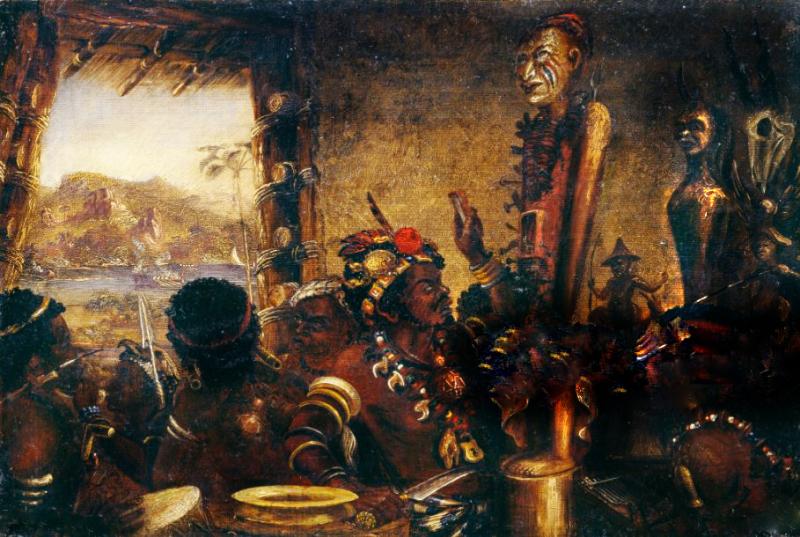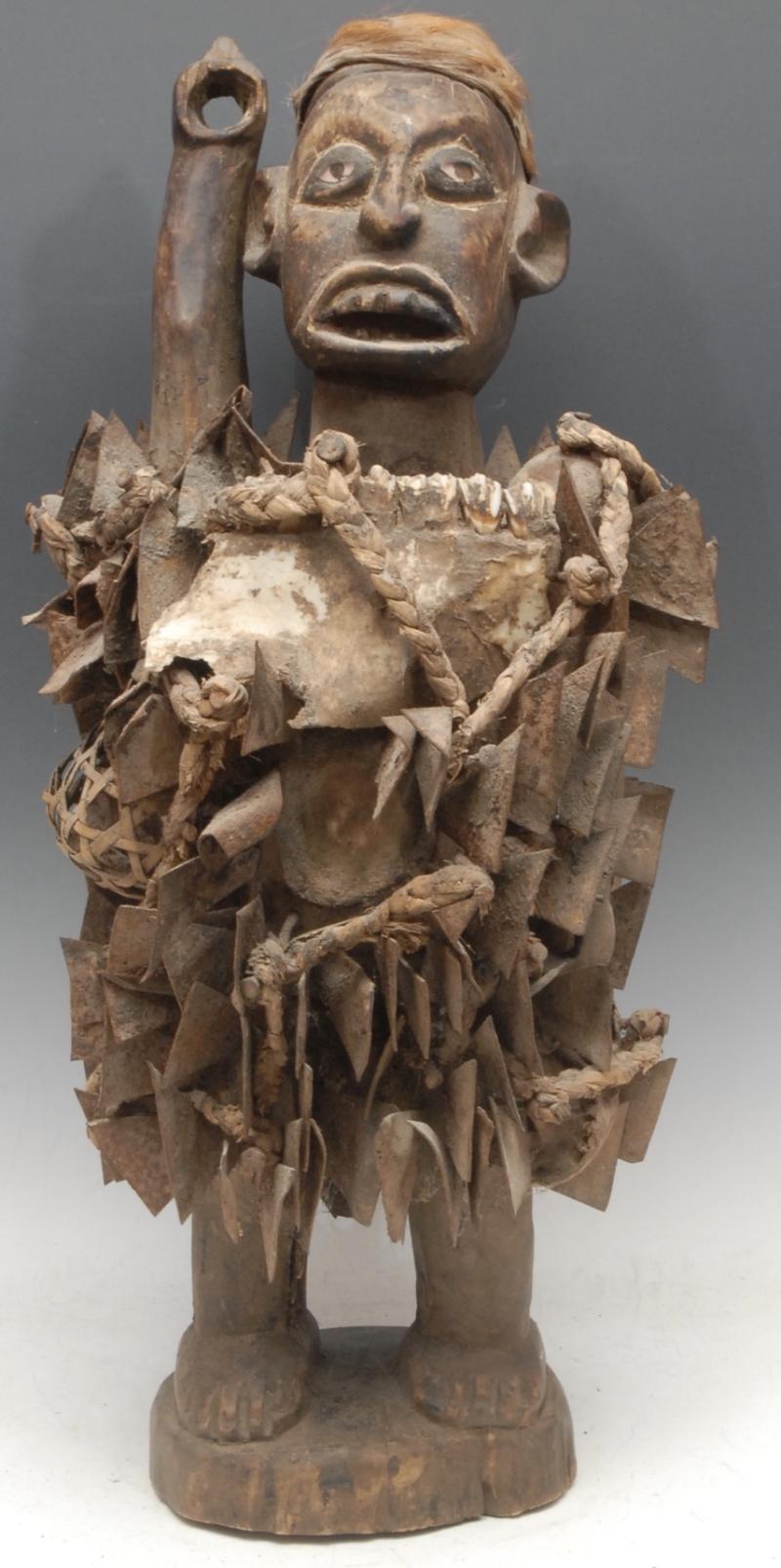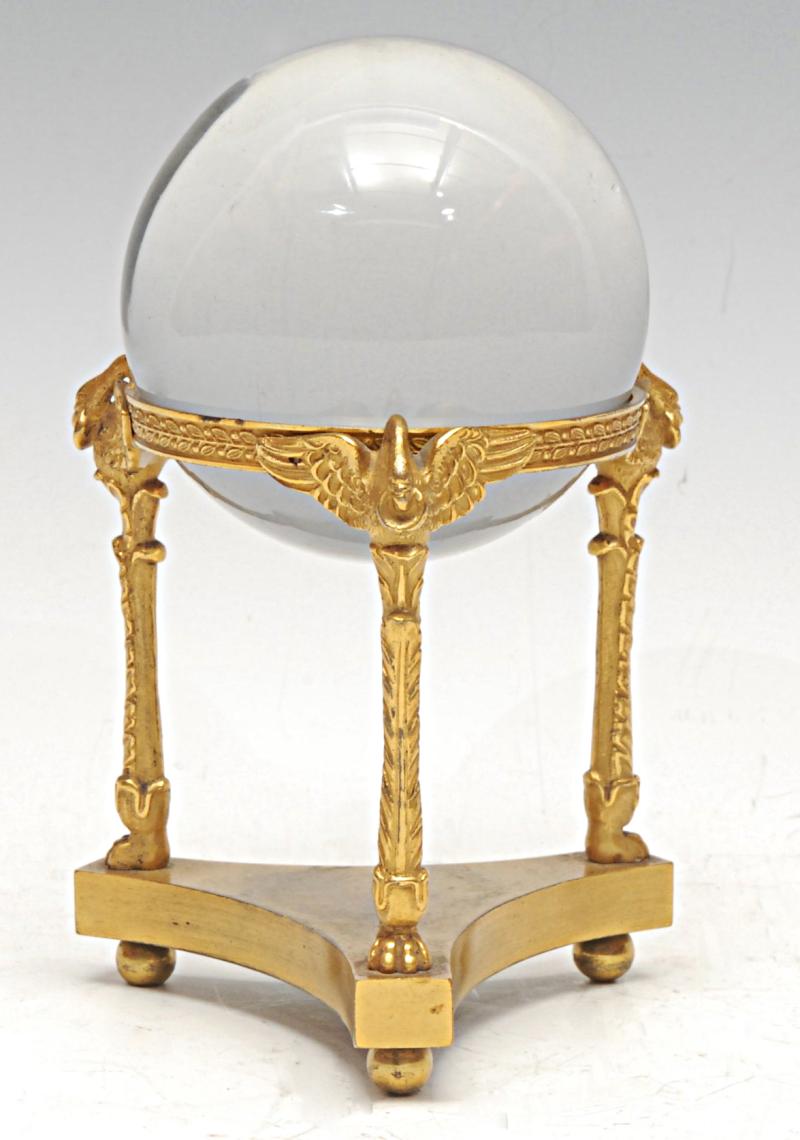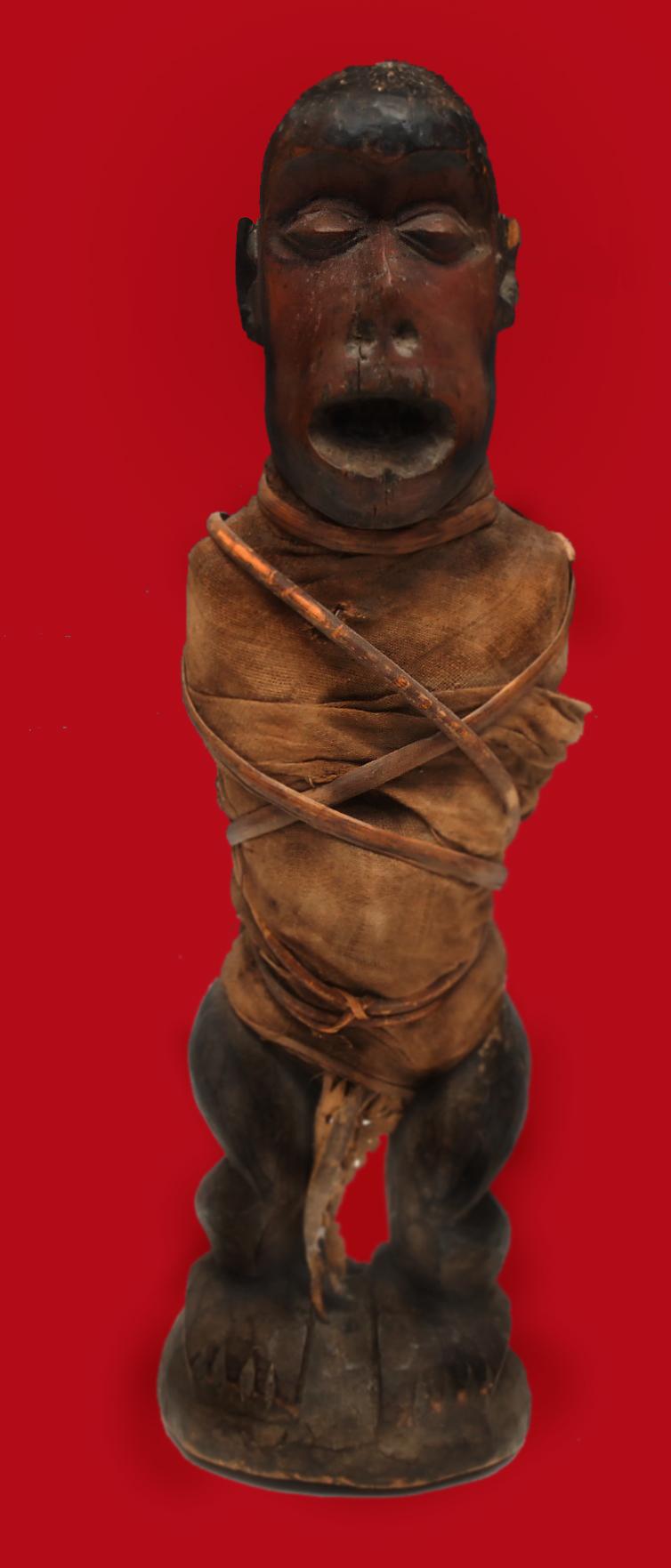A Superb Esoteric Collection of Vintage Witchcraft Pieces, Witchballs & African Kongo Nail-Fetish Figures, & A Voduo {Voodoo} Entangled Simian Carved Figure. Feared by Victorian Missionaries as Instruments of Sorcery by The Tribal Nganga. & A Draken Head
This wonderful collection acquired over many decades has now arrived, including some intriguing original Kongo Voodou Nkisi oath figures, and so called, antique Witch's 'crystal balls'. The scrying balls, are set in superb, original antique, ormulu gilt and bronze mounts, in the rococco, classical and French Empire style, all based upon a classical and mythical theme, Ancient Roman, Ancient Greek, or Ancient Druidian. All designed to mount their occult scrying balls, that were used by gazing into their centre, for the divination of the future, and the answering of questions. As well as the warding off of evil spirits and misfortune.
Witch balls were found in England in the 1600 and 1700s originally to ward off evil spirits and spells. By the 1800s witch balls crossed the Atlantic to New England. They also spread to other parts of Europe, being found in Italy, France, and Constantinople. The witch ball originated among cultures where harmful magic and those who practiced it were feared. They are one of many folk practices involving objects for protecting the household. The word witch ball may be a corruption of watch ball because it was used to ward off, guard against, evil spirits. They may be hung in an eastern window, placed on top of a vase, or for the very wealthy set upon a decorative gold stand, either pedestal, or figural, or suspended by a cord (as from the mantelpiece or rafters). They may also be placed on sticks in windows or hung in rooms where inhabitants wanted to ward off evil.
Superstitious European sailors valued the talismanic powers of the witch balls in protecting their homes. Witch balls appeared in America in the 19th century and larger, more opaque variations are often found in gardens under the name gazing ball. This name derives from their being used for divination and scrying where a person gazes into them dreamily to try to see future events or to see the answers to questions. However, gazing balls contain no strands within their interior. The witch ball holds great superstition with regard to warding off evil spirits in our particular English counties of East Sussex and West Sussex. The tradition was also taken to overseas British colonies, such as the former British colonies of New England, and remains popular in coastal regions. Apparently, our Hawkins forebears ship’s that sailed across to the New World in the 1600’s, for both trade, emigres, and pilgrims, would carry at least one witch ball hung within a net on board. Our paternal grandmother hung one such in a net from her home’s east window all her life until her death in the 1980’s.
Also see our Völva’s Viking Draken head from an iron staff or wand. It was an important accessory used by the Völva when carrying out Seiđr, Viking magic. A Völva was a Viking Sorcerer or Sorceress of Seiđr. The iron staff or wand was an important accessory used by the Völva when carrying out Seiđr, Viking magic. The.magic staffs were around two to three foot long, forged of iron, often in the form of a distaff, with a knob pommel, that could take many forms, made of other metals, more usually brass or bronze, sometimes the knob might be inlaid with gems, and the staff was used by professional Viking sorcerers and sorceresses when performing Seiđr
The African Kongo Witch Doctor's power figures that stand prominent among all minkisi is called nkisi nkondi likely from the Bakongo people. This type of figure is commonly called a nail fetish and is one of the most recognisable and collectible figures in all of African art. These life-like figures are instantly identified by the many nails, pegs, blades, and shards that are hammered into them. Each individual insertion represents one of three things: an oath or agreement between two parties, a pledge to provide protection against enemies and witchcraft, or a vow of vengeance. 'Nkondi' literally means 'hunter;' and it is generally considered an aggressive entity.
The insertions are driven into the figure by the nganga and represent the mambu and the type or degree of severity of an issue can be suggested through the material itself. A peg may refer to a matter being ‘settled’ whereas a nail, or metal shard, deeply inserted, may represent a more serious offense such as murder. Prior to insertion, opposing parties or clients often lick the blades or nails, to seal the function or purpose of the nkisi through their saliva. If an oath is broken by one of the parties or evil befalls one of them, the nkisi nkondi will become activated to carry out its mission of destruction or divine protection
The imposing presence and implied power of nkisi nkondi is certainly enough to keep anyone committed to a promise or agreement. Like other minkisi, powerful medicine is usually stored inside the belly, which can then covered by a piece of glass or mirror. The reflective surface represents the world of the dead and the vision of the spirits. One is a traditional naked fetish witchcraft figure, standing upright, deeply carved staring eyes a the body studded overall with approx 200 similar 3 inch nails, on 2 flat feet on an integral carved pedestal, approx 22.25 " high. Another with hundreds of sharp shards of iron driven into the body, a traditional oath taking figure, with its right arm outstretched, upwards that may, some believe, have once held a spear. One more is of an entangled zoomorphic figure of a simian. Tightly bound and encased at the body in cloth with wood strapping.
After a tribal carver artist completed carving the artifact, the "nganga" transformed it into an object capable of healing illness, settling disputes, safeguarding the peace, and punishing wrongdoers. Each work of this kind or "nkisi" is associated with a spirit, that is subjected to a degree of human control.
Europeans may have encountered these objects during expeditions to the Congo as early as the 15th century. However, several of these fetish objects, as they were often termed, were confiscated by missionaries in the late 19th century and were destroyed as evidence of sorcery or heathenism. Nevertheless, several were collected as objects of fascination and even as an object of study of Kongo culture. Kongo traditions such as those of the nkisi nkondi have survived over the centuries and migrated to the Americas and the Caribbean via Afro-Atlantic religious practices such as vodun, Palo Monte, and macumba. In Hollywood these figures have morphed into objects of superstition such as New Orleans voodoo dolls covered with stick pins. Nonetheless, minkisi have left an indelible imprint as visually provocative figures of spiritual importance and protection.
Often such figures were placed outside, or within, the hut of a certain form of tribal elder, what we would refer to as, the tribal witch-doctor, called a Nganga as a symbol of his position within the local village, and his ability to cause magical curses and unpleasantness for villagers who had fallen out with others of the village or region, who then sought out the services of the so called 'witch-doctor' to resolve the problem, with, such as, a curse.
Vintage Hand Carved African Medicine Man Nkisi figures. Esoteric collector's pieces, connected to the so-called western term of Voodoo {vodou} magic, part of the pantheon of the occult, magic & witchcraft of Africa.
Among the various Kongo peoples, nkisi means a sacred medicine. This word has been extended to include objects containing that medicine as well. The carved wooden statues referred to in the 19th century as nail fetishes and more recently as power figures containing medicine that imbues them with divine power, are therefore nkisi as well. Due to the medicine they contain (which is administered by a witch doctor or nganga), they act as agents of divine power, granting requests. healing or attesting to agreements. Each decision or resolution is literally nailed down in the figure.
A certain class of nkisi, called nkondi, are able to enforce the solutions they provide actively and to seek vengeance against those who heed them not. These figures either menace the viewer with spears and fierce facial expressions, or strike intimidating, belligerent poses.
Nkisi nkondi specialize in different areas of life. The most important nkisi nkondi carries out mangaaka, or preeminent justice.
Surveillance or watchfulness assist the effective enforcement of the power figure’s decisions. This is registered in the size of the eyes or, in some cases, by multiple sets of eyes. The rope wrapped around some figures represents a snake, a watchful predator who lends its powers of observation to the figure. Double-headed figures have double the visual powers and can see into the city of the dead and the realm of the living at the same time.
Each power figure has a distinct personality, ranging from contemplative to angry to soulful to reserved to compassionate. The ability to suggest those qualities visually with such immediacy and precision is one of the most impressive aspect of the surviving figures.
Kongo religion Kikongo: Bukongo. Bakongo religion was translocated to the Americas along with its enslaved practitioners. Some surviving traditions include conjure, dreaming, possession by the dead to learn wisdom from the ancestors, traditional healing and working with minkisi. The spiritual traditions and religions that have preserved Kongo traditions include Hoodoo, Palo Monte, Lumbalú, Kumina, Haitian Vodou, Candomblé Bantu, Kongo traditions such as those of the nkisi nkondi have survived over the centuries and migrated to the Americas and the Caribbean via Afro-Atlantic religious practices such as vodun, Palo Monte, and macumba.
Similar examples in the Smithsonian and Metropolitan in the USA. One very similar nkisi, from the late 19th to mid 20th century has been a highlight of the Rockefeller collection since its acquisition in 1952.
Code: 25492
2650.00 GBP






